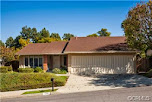The Great Recession rewrote the American dream. Millions of Americans who thought they’d captured the flag instead got swallowed up by a national mortgage-foreclosure crisis. Many of those former homeowners are now renters, competing in ever-more concentrated job markets for ever-scarcer affordable housing.
So perhaps it comes as no surprise that most Americans say that the housing crisis never ended. In fact, one in five Americans say that the worst is yet to come, according to a new poll from the John D. and Catherine T. MacArthur Foundation.
Maybe these are the same one in five Americans who say that they have
sacrificed spending in order to make rent. Maybe they feel squeezed by housing markets where it
costs more to rent than to own, but where households can hardly afford to do either. It’s nevertheless a staggering answer: 19 percent of poll respondents said that the worst is yet to come. And the share of respondents who gave that answer, polled between April and May of this year, is virtually unchanged from the share who responded the same way in 2015 (20 percent), 2014 (19 percent), and 2013 (19 percent).
Pessimism about the housing market is not a narrow band, either. Asked about the difference between the start of the housing crisis in 2008 and where things stand today, the largest share of respondents said that we’re still in the thick of the housing crisis (44 percent). A whopping 81 percent of respondents said that housing affordability is a problem. And more than one-third of respondents (37 percent) said that housing affordability is a “very serious problem.” This share of worried Americans is also virtually unchanged from a year ago.
The poll also finds an enormous appetite for leadership from Washington, D.C. Respondents were split on how much they thought anyone could really do to solve the housing crisis, with about a third saying “a great deal,” a third saying “a fair amount,” and a third saying “just some” or “nothing at all.” But Americans think that it’s important that their leaders address the problem, no matter what. Large majorities of respondents said that it was “very important” for elected leaders to address housing affordability (60 percent) and that candidates for the presidential election were paying “not enough attention” to the issue (63 percent).
Asked about specific policies that could address housing affordability, the respondents favored them—all of them—by big margins. This portion on solutions follows verbatim from the poll:
• Revise the federal income tax code so that more families with incomes from $40,000 to $70,000 receive tax benefits intended to help them purchase homes. (Total favor: 81 percent; total oppose: 16 percent)
• Expand federal housing policies and programs to ensure that families earning less than $30,000 with children under age 18 receive some assistance with their housing costs. (Total favor: 80 percent; total oppose: 18 percent)
• Allow developers to build more housing units if they include units that are affordable to families making less than $50,000. (Total favor: 79 percent; total oppose: 18 percent)
• Expand federal housing policies and programs to ensure that low-income families with children under age 18 receive some assistance with their housing costs. (Total favor: 76 percent; total oppose: 22 percent)
• Require that at least 20 percent of housing in local communities is affordable for families making less than $50,000. (Total favor: 74 percent; total oppose: 23 percent)
• Ensure that federal programs, such as the Earned Income Tax Credit and Temporary Assistance for • Needy Families, provide enough income assistance to cover housing costs. (Total favor: 74 percent; total oppose: 22 percent)
• Expand rental assistance to ensure that the approximately 14 million Americans who currently qualify for rental assistance but are not receiving it, get it. (Total favor: 73 percent; total oppose: 24 percent)
• Give renters a federal tax break, similar to the federal tax break homeowners currently get when they deduct the interest they pay on their mortgage. (Total favor: 70 percent; total oppose: 26 percent)
Some of these proposals are fairly radical. Expanding the federal mortgage interest tax deduction to renters is a far-reaching proposal! Voters might not love several of these ideas after (say) they went through a Congressional Budget Office scoring, but the fact that a majority of them would welcome fairly dramatic action from Congress on affordable housing should give legislators reason to take notice.
It should also give voters pause that Congress doesn’t plan to do anything. It is worrying that, several years into the recovery, so many see the problem as not just persistent but worsening. They see the response from the government as not just insufficient but non-existent. There is no reason to think that federal spending on housing—which has declined over time and
contributed to the painful persistence of the housing crisis—will improve any time before November or even after.
While the Republican or Democratic candidate for the White House could choose to make affordable housing a more salient aspect of his or her respective campaigns, nothing is likely to change without a sea change in Congress. Congressional deadlock has only diminished what little federal support for housing exists in the budget. For many Americans, the housing crisis won’t go away.





































